Did you know you can make TWO fence plank birdhouses using a single 8-foot long fence plank? It’s easy, there are only a few cuts and they’re so precise there’s very little waste of the wood. Bring the joy of birdwatching to your own backyard with your fence plank birdhouse!
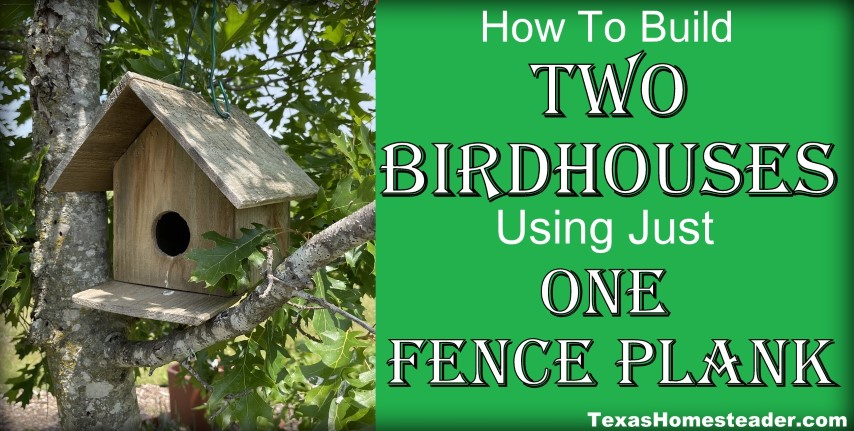
Yes, you can actually make not only one, but TWO birdhouses from a single 6″ wide, 8-ft long fence plank.
Creating a fence plank birdhouse not only adds charm to your garden but also provides shelter for local birds.
Really, you don’t get any better than that!
The best wood for a fence plank birdhouse is typically cedar, as it is naturally durable and aesthetically pleasing.
For your fence plank birdhouse, using untreated wood is essential for ensuring the safety of your feathered friends.
You may wonder what kind of wood you should use for your homemade birdhouse. Fence planks come in different types of wood but the most common are pine and rough cedar.
For longevity, we prefer to use cedar. It’s said that cedar’s chemical properties not only repel most bugs, but is also naturally weather resistant as well.
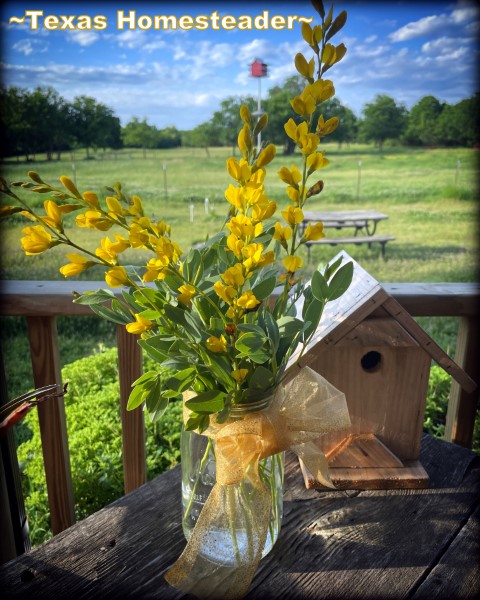
Each section of the fence plank birdhouse can be cut with precision for a perfect fit.
Plus I prefer the look of a rough cedar birdhouse.
There are only a few cuts you need to make in an 8-ft fence plank to make two birdhouses. The graphic below is half a plank to show the easy cuts for each birdhouse.
Creating a fence plank birdhouse can be a fulfilling project for the whole family.
(But remember you’ll be able to make TWO birdhouses from one full plank!)
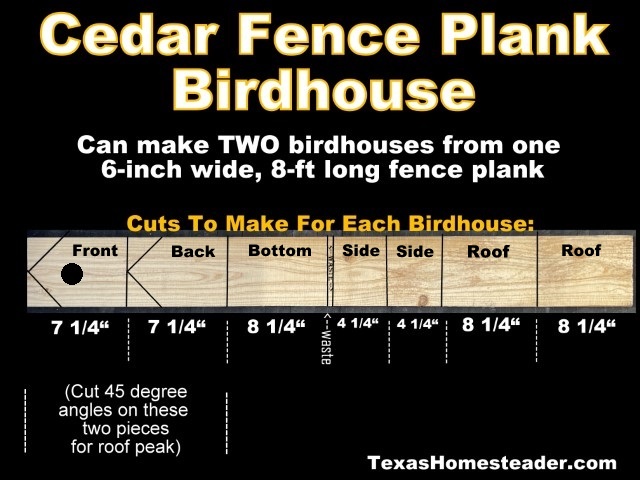
Below is a list of cuts to make for each birdhouse:
Stack your cut pieces together and prepare to assemble your birdhouse.
You can absolutely use fence planks from an old fence to make your birdhouses. It lends a rustic look to your birdhouse and is one of the best examples of #UseWhatchaGot!
Plus oftentimes you can pick up old weathered fence planks for free from a neighbor who’s replacing their fence.
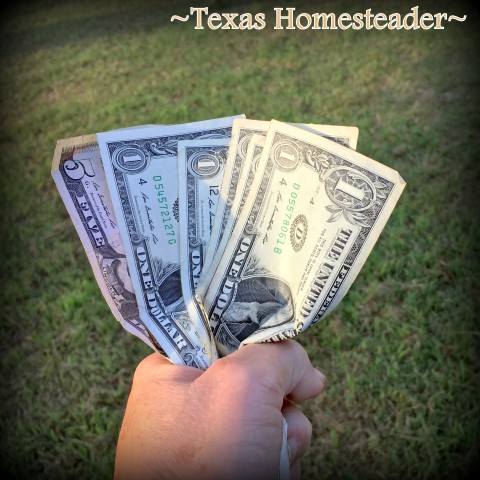
Remember, your beautiful fence plank birdhouse can attract various birds to your garden.
Try to find fence planks that have no added chemicals such as paint or stain. And make sure there are no splits down the length of the board.
Keep in mind as well that boards without soft or rotted edges will be easier to work with.
You may have to tweak the cuts to work around possible decay at the ends of the boards but the results will still be beautiful and rustic!
Cedar wood seems to last longer than pine or other wood options. It’s general-accepted knowledge that untreated cedar can last between 15 and 30 years!
That’s a lot of mileage from your homemade birdhouse.
Not every breed of bird will use a birdhouse to build their nest. But there are many different kinds of birds that will enjoy the shelter of your homemade birdhouse:
Understanding the needs of the birds can help you design the perfect fence plank birdhouse.
With proper care, your fence plank birdhouse can last for years, providing shelter for many birds.
Many birds such as bluebirds and wrens will find your fence plank birdhouse inviting.
…and more!
Enjoy the cheerful chatter of all the birds that will visit your yard to enjoy the birdhouse you made for them!
The size of the hole in a birdhouse is said to draw different species of birds.
Make sure your fence plank birdhouse has the right hole size for the birds you want to attract.
I’d say this doesn’t have to be exact though. We drilled a 1¾” hole in our birdhouse and we immediately had a family of bluebirds build their nest in our birdhouse, lay eggs and hatch their babies!
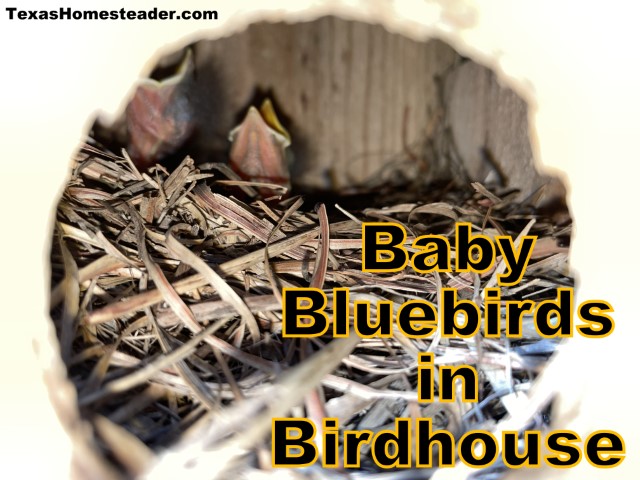
A couple of weeks after the babies left the nest we cleaned out the old nesting material and now bluebirds are building in that same birdhouse again.

~TxH~
This post categorized in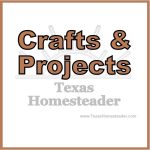
Tagged in


Be proud of your DIY skills when you showcase your fence plank birdhouse.
…and many MORE!

C’mon by & sit a spell! Come hang out at our Facebook Page. It’s like sitting in a front porch rocker with a glass of cold iced tea. Lots of good folks sharing! You can also follow along on Pinterest, on Twitter or on Instagram.
If you’d like to receive an email each time a new blog post goes live it’s EASY to subscribe to our blog
Enjoy the satisfaction that comes with building your own fence plank birdhouse.
Don’t forget to enjoy the moment when the first bird moves into your fence plank birdhouse!
With some creativity, your fence plank birdhouse can stand out from the rest.
Your fence plank birdhouse can contribute positively to the environment by providing a home for birds.
Table of Contents
- Can You Make A Birdhouse Out Of A Fence Plank?
- What Kind Of Wood Do You Use For A Birdhouse?
- What Cuts Do I Make For My Fence Plank Birdhouse?
- Cuts To Make For Each Birdhouse
- Can I Use Old Worn Fence Planks To Make A Birdhouse?
- How Long Will Untreated Cedar Wood Last Outside?
- What Kinds Of Birds Will Nest In A Birdhouse?
- What Sized Hole Should I Drill In My Birdhouse?
- Our Favorite Crafts & Projects
- See All Crafts

Can You Make A Birdhouse Out Of A Fence Plank?
Yes, you can actually make not only one, but TWO birdhouses from a single 6″ wide, 8-ft long fence plank.
Creating a fence plank birdhouse not only adds charm to your garden but also provides shelter for local birds.
Really, you don’t get any better than that!
What Kind Of Wood Do You Use For A Birdhouse?
The best wood for a fence plank birdhouse is typically cedar, as it is naturally durable and aesthetically pleasing.
For your fence plank birdhouse, using untreated wood is essential for ensuring the safety of your feathered friends.
You may wonder what kind of wood you should use for your homemade birdhouse. Fence planks come in different types of wood but the most common are pine and rough cedar.
For longevity, we prefer to use cedar. It’s said that cedar’s chemical properties not only repel most bugs, but is also naturally weather resistant as well.

Each section of the fence plank birdhouse can be cut with precision for a perfect fit.
Plus I prefer the look of a rough cedar birdhouse.
What Cuts Do I Make For My Fence Plank Birdhouse?
There are only a few cuts you need to make in an 8-ft fence plank to make two birdhouses. The graphic below is half a plank to show the easy cuts for each birdhouse.
Creating a fence plank birdhouse can be a fulfilling project for the whole family.
(But remember you’ll be able to make TWO birdhouses from one full plank!)

Cuts To Make For Each Birdhouse
Below is a list of cuts to make for each birdhouse:
Stack your cut pieces together and prepare to assemble your birdhouse.
Can I Use Old Worn Fence Planks To Make A Birdhouse?
You can absolutely use fence planks from an old fence to make your birdhouses. It lends a rustic look to your birdhouse and is one of the best examples of #UseWhatchaGot!
Plus oftentimes you can pick up old weathered fence planks for free from a neighbor who’s replacing their fence.

Remember, your beautiful fence plank birdhouse can attract various birds to your garden.
Try to find fence planks that have no added chemicals such as paint or stain. And make sure there are no splits down the length of the board.
Keep in mind as well that boards without soft or rotted edges will be easier to work with.
You may have to tweak the cuts to work around possible decay at the ends of the boards but the results will still be beautiful and rustic!
How Long Will Untreated Cedar Wood Last Outside?
Cedar wood seems to last longer than pine or other wood options. It’s general-accepted knowledge that untreated cedar can last between 15 and 30 years!
That’s a lot of mileage from your homemade birdhouse.
What Kinds Of Birds Will Nest In A Birdhouse?
Not every breed of bird will use a birdhouse to build their nest. But there are many different kinds of birds that will enjoy the shelter of your homemade birdhouse:
Understanding the needs of the birds can help you design the perfect fence plank birdhouse.
With proper care, your fence plank birdhouse can last for years, providing shelter for many birds.
Many birds such as bluebirds and wrens will find your fence plank birdhouse inviting.
…and more!
Enjoy the cheerful chatter of all the birds that will visit your yard to enjoy the birdhouse you made for them!
What Sized Hole Should I Drill In My Birdhouse?
The size of the hole in a birdhouse is said to draw different species of birds.
Make sure your fence plank birdhouse has the right hole size for the birds you want to attract.
I’d say this doesn’t have to be exact though. We drilled a 1¾” hole in our birdhouse and we immediately had a family of bluebirds build their nest in our birdhouse, lay eggs and hatch their babies!

A couple of weeks after the babies left the nest we cleaned out the old nesting material and now bluebirds are building in that same birdhouse again.

~TxH~
This post categorized in

Tagged in



Our Favorite Crafts & Projects
Be proud of your DIY skills when you showcase your fence plank birdhouse.
- Make Your Own Clothespin Apron
- A Denim Dish Carrier Using Worn Jeans
- Cute Cloth Gingham Napkins For $1
Outdoors & Garden
- How To Build A Birdhouse Using A Fence Plank
- Make A Dragonfly Rock Garden Accent
- Painting Rocks To Look Like Strawberries
- Fun, Customized Cornhole Game
- MYO Backyard Tossing-Game Bags
- How To Paint A Texas Flag Gate
Home Décor
- Arrowhead Cross Collage In Shadow Box Frame
- Rustic Reclaimed Barn Wood Headboard
- Old Barnwood Wall Photo Feature
- Homemade Barnwood Mirror
- Cute Flannel Pillows Using Flannel Shirts
- Make An All-Natural Air Freshener
Misc
…and many MORE!
See All Crafts

C’mon by & sit a spell! Come hang out at our Facebook Page. It’s like sitting in a front porch rocker with a glass of cold iced tea. Lots of good folks sharing! You can also follow along on Pinterest, on Twitter or on Instagram.
If you’d like to receive an email each time a new blog post goes live it’s EASY to subscribe to our blog
Enjoy the satisfaction that comes with building your own fence plank birdhouse.
Don’t forget to enjoy the moment when the first bird moves into your fence plank birdhouse!
With some creativity, your fence plank birdhouse can stand out from the rest.
Your fence plank birdhouse can contribute positively to the environment by providing a home for birds.
